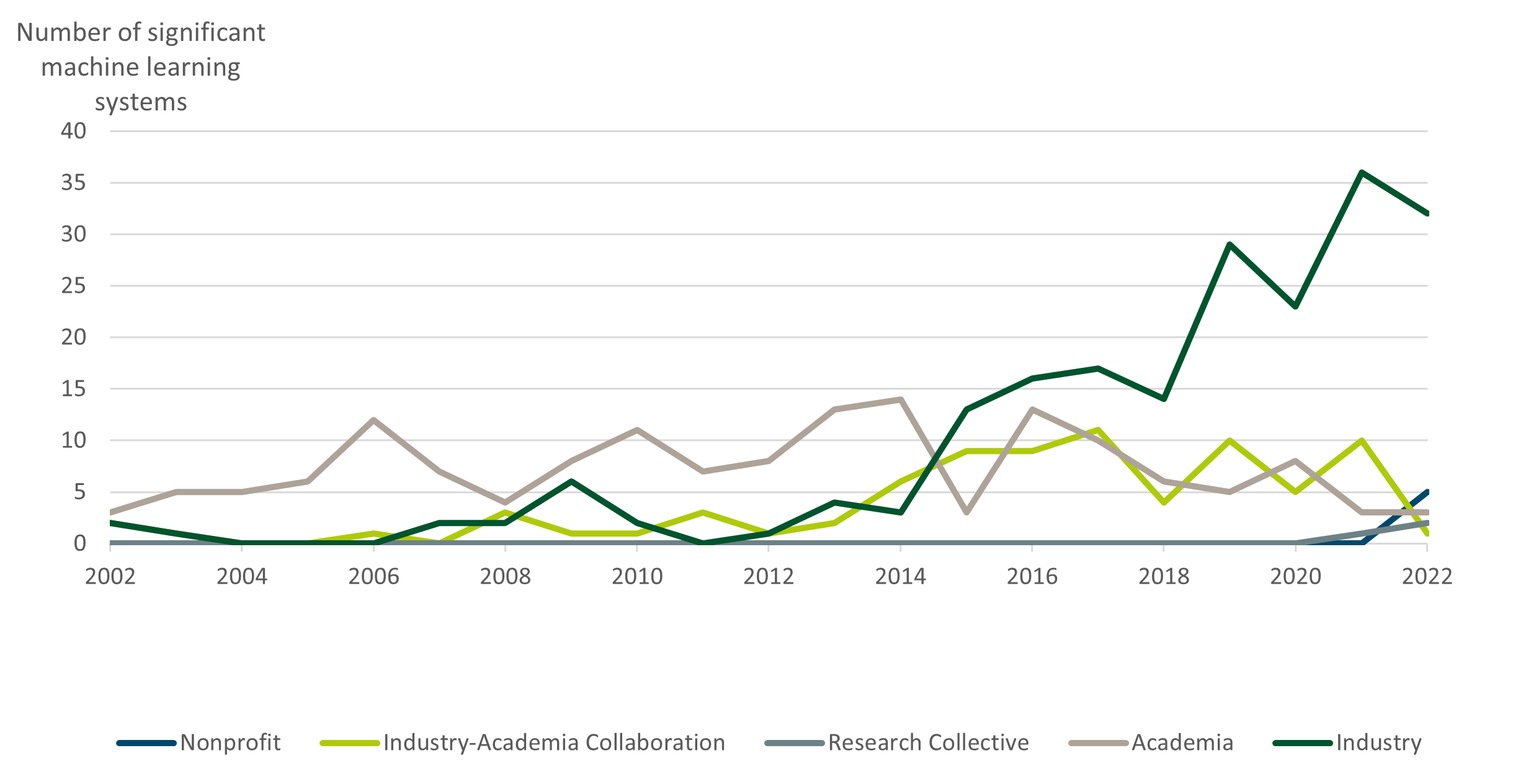Industry rather than academia takes the lead

Source: “The AI Index 2023 Annual Report,” AI Index Steering Committee, Institute for Human-Centered AI, Stanford University, Stanford, CA, April 2023
In terms of identifying long-term beneficiaries of AI, two bits of context any experienced human investor knows are that (a) forecasts are extremely tricky for disruptive technologies[1]and (b) AI has been a hot topic in recent months, driving up relative valuations. Markets are adaptive. Companies have incentives to tell their investors what those investors want to hear. Knowing this, one might, for example, use AI to look for companies which have been investigating – and bragging – about their transformative AI potential for years, rather than focusing on recent converts or comments during the latest earnings calls. It also helps to keep an eye on developments beyond the U.S., especially in Asia.[2]
Recent progress has been years in the making. Consider how far AI has come, for example, in playing chess. In 2017, it was announced that Deep Mind’s AlphaZero could trounce “the strongest superhuman chess engine,” entirely by teaching itself, “without learning established human wisdom on chess strategy.”[3]Of course, self-taught AI programs would work nowhere near as well if the rules kept changing. Still, in many areas, AI is already accelerating scientific discovery and innovation. This includes an increasing share of applied research by industry, rather than academia (see chart), promising readily applicable breakthroughs. “We believe that AI beneficiaries have powerful levers to drive future revenue and profit growth. In our analysis we put particular emphasis on the moat – that is, the durable competitive advantage – around a company's AI product as well as its related growth potential,” explains Tobias Rommel, Senior Portfolio Manager at DWS.










